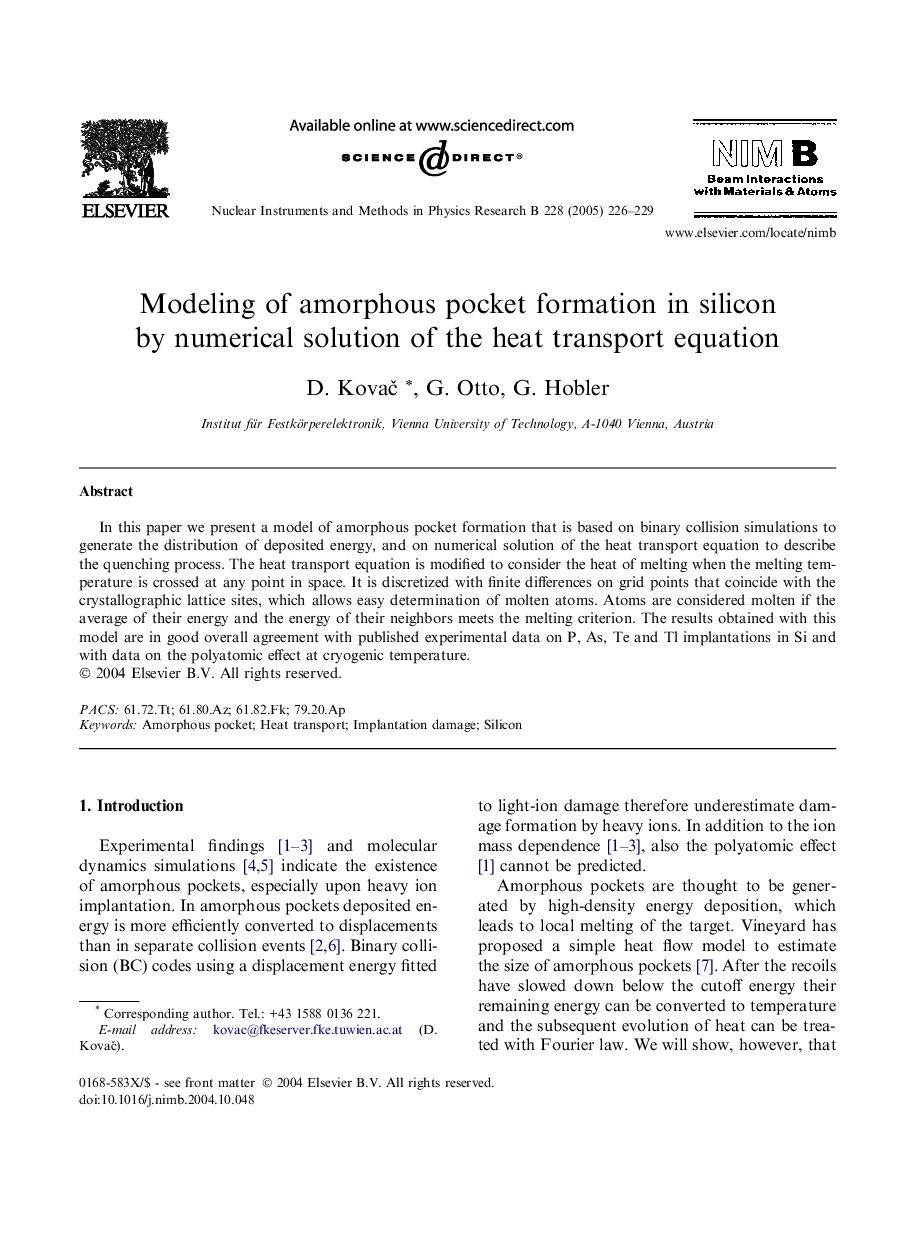| Article ID | Journal | Published Year | Pages | File Type |
|---|---|---|---|---|
| 9818409 | Nuclear Instruments and Methods in Physics Research Section B: Beam Interactions with Materials and Atoms | 2005 | 4 Pages |
Abstract
In this paper we present a model of amorphous pocket formation that is based on binary collision simulations to generate the distribution of deposited energy, and on numerical solution of the heat transport equation to describe the quenching process. The heat transport equation is modified to consider the heat of melting when the melting temperature is crossed at any point in space. It is discretized with finite differences on grid points that coincide with the crystallographic lattice sites, which allows easy determination of molten atoms. Atoms are considered molten if the average of their energy and the energy of their neighbors meets the melting criterion. The results obtained with this model are in good overall agreement with published experimental data on P, As, Te and Tl implantations in Si and with data on the polyatomic effect at cryogenic temperature.
Related Topics
Physical Sciences and Engineering
Materials Science
Surfaces, Coatings and Films
Authors
D. KovaÄ, G. Otto, G. Hobler,
